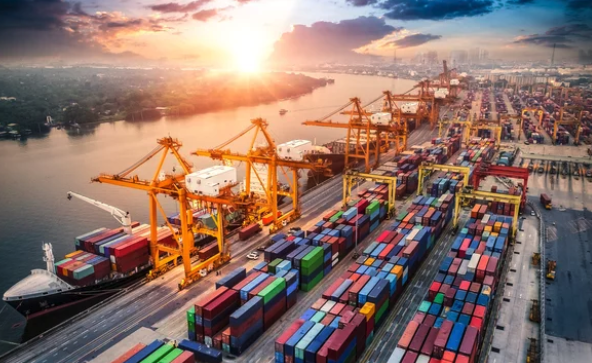4 Tips for Procurement Logistics Pros to Weather Economic Storms

For logistics procurement, the past 12 months have been a continual, yet perfect storm. First, the pandemic exposed a decades-old model based on low transportation costs. Then the conflict in Ukraine created a fresh set of problems, including a huge spike in energy prices.
The relative certainty that procurement and supply chain organizations enjoyed at the end of 2019 has all but disappeared. Take maritime container prices as an example. According to research by Upply, the average rate basket between Asia and Europe has quadrupled in just three years to between $6,000 and $7,500 per 40-foot container.
That’s an astonishing hike, but one in keeping with an inflationary environment that has turned supply chains on their heads. As a result, the challenges facing global logistics and supply chain professionals have never been so stark, particularly as global disruptions continue.
In the midst of the storm, there might be a temptation to panic, an urge to turn our backs on everything that has been learned in the previous 20 years. But those actions would merely exacerbate the problem. This is a time for cool heads and a period where supply chain and procurement logistics professionals must be strategic to combat the economic headwinds and sail into smoother waters.
1) Improve the total cost of operations
Looking at the total cost of operations and removing any inefficiencies is one of the most effective ways of maintaining a level of control over logistics spending. That can be done through better demand planning and the need to view demand as something which is dynamically changing. Being able to sense that demand and match it with capacity, and a dynamic pricing model is crucial at this time.
Demand planning among big manufacturing companies has traditionally been done on an annual or bi-annual cycle. In the current environment that’s neither desirable nor sensible.
Instead, a more pragmatic approach is required. Embracing a dynamic pricing model is also essential. In fact, there are industries that are already realizing the benefits of this approach, such as airlines, for example, so we know that this is a successful strategy.
2) Don’t ignore your existing suppliers
When budget allocations are at their lowest, it may be tempting to ditch existing suppliers and others in your value chain who may not be offering the best price. Indeed, if your contract has been in place for years, you’re likely not often negotiating for the lower costs.
While cost efficiency is vitally important during this time, don’t discount the value of existing relationships. Existing suppliers are more likely to give you preferential and expedited access to the materials that you need than new ones.
And, when you’re higher up in the “queue” to get the materials you need, this can help to prevent some of the shortages we are seeing across the supply chain. If you really can’t afford an existing supplier, try re-negotiating with them before letting go of a relationship altogether.
3) Be agile – diversify your supplier base
While existing supplier relationships are vitally important, make sure you’re not putting all of your eggs in one basket. We’ve seen in the past two or three years how the pandemic has heightened risk—and illustrated that it’s not desirable to focus everything on the success or failure of one or two suppliers.
If a business is hugely dependent on a small number of suppliers, that’s a very risky strategy. Now, with businesses around the world feeling the weight of recessionary pressures, procurement needs to respond by spreading the risk among a diverse portfolio of suppliers.
That may take a strategic mindset change, but the lessons of the pandemic have shown it’s a necessity.
4) Embrace innovation
In a recession, logistics procurement professionals tend to focus solely on short-term goals, such as reducing costs and increasing efficiency. Unfortunately, during this time, implementing new ideas and innovations can be seen as an extravagance and a waste of valuable time and resources, and ultimately put on the back burner.
However, even today, many procurement and supply chain processes are still very manual. Digital technology is out there to solve the problems detailed above, and at scale too.
By bringing in artificial intelligence, for example, procurement and logistics pros can automate mundane tasks like plotting the most optimal shipping routes. With innovation on your side, your staff can focus on more high-value tasks, a perk that could prove invaluable as staffing and talent shortages remain.
If the economy is going through a downturn, then only the strongest companies will ultimately survive—and embracing innovation can often be the difference between making it through the bad times and not.
Key takeaways
Every challenge brings possibilities. And this is certainly the case for logistics and supply chain professionals in the current economic downturn. By placing the function at the heart of the business’s response to the crisis, your organization can be positioned for success now and in the future.

